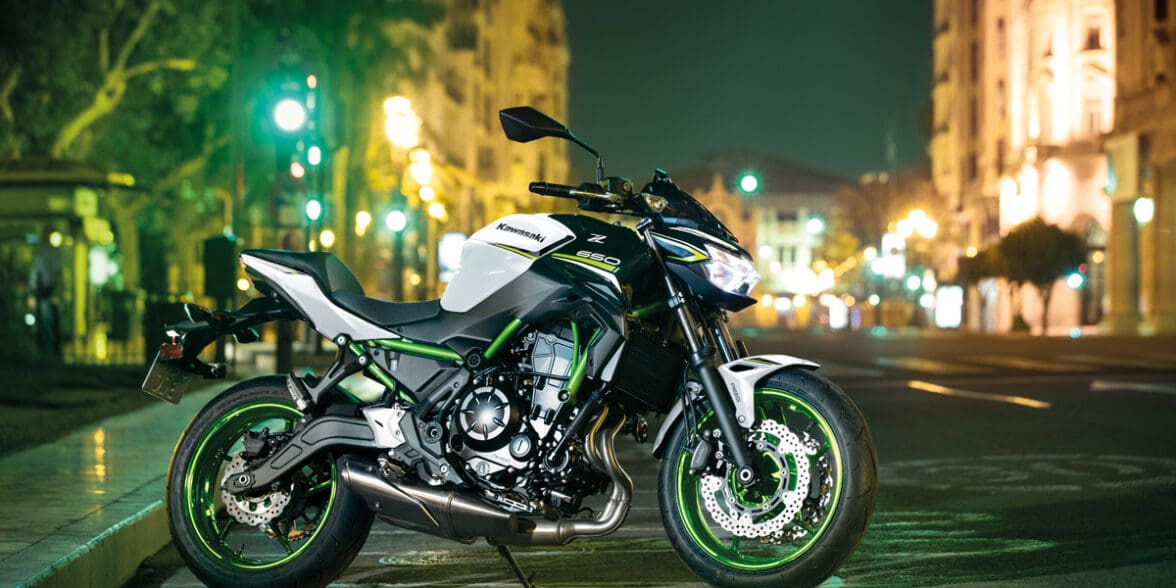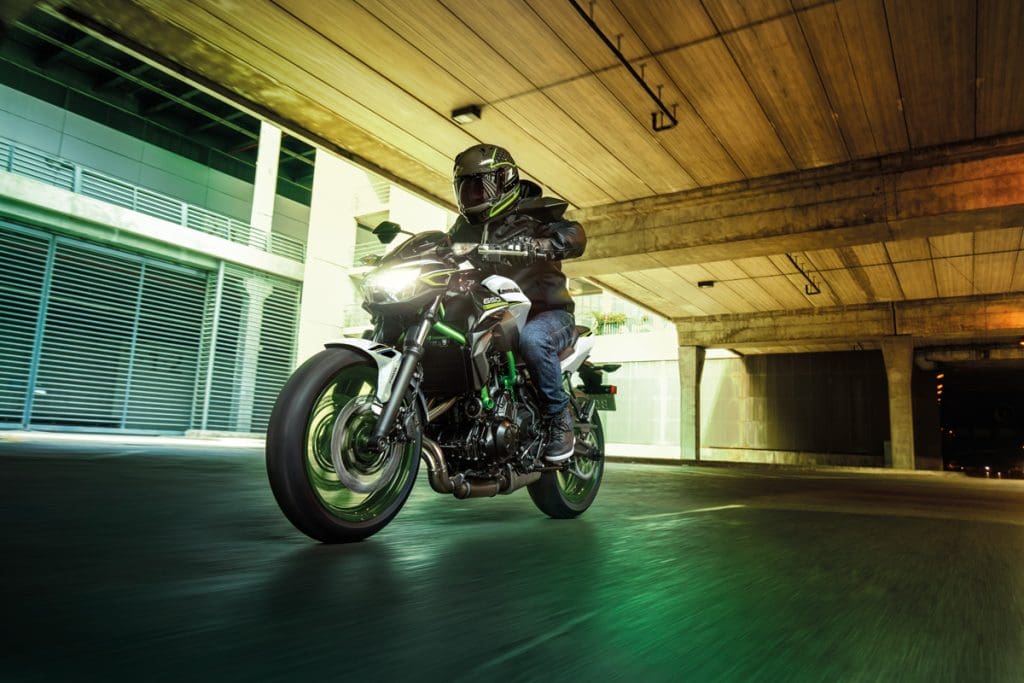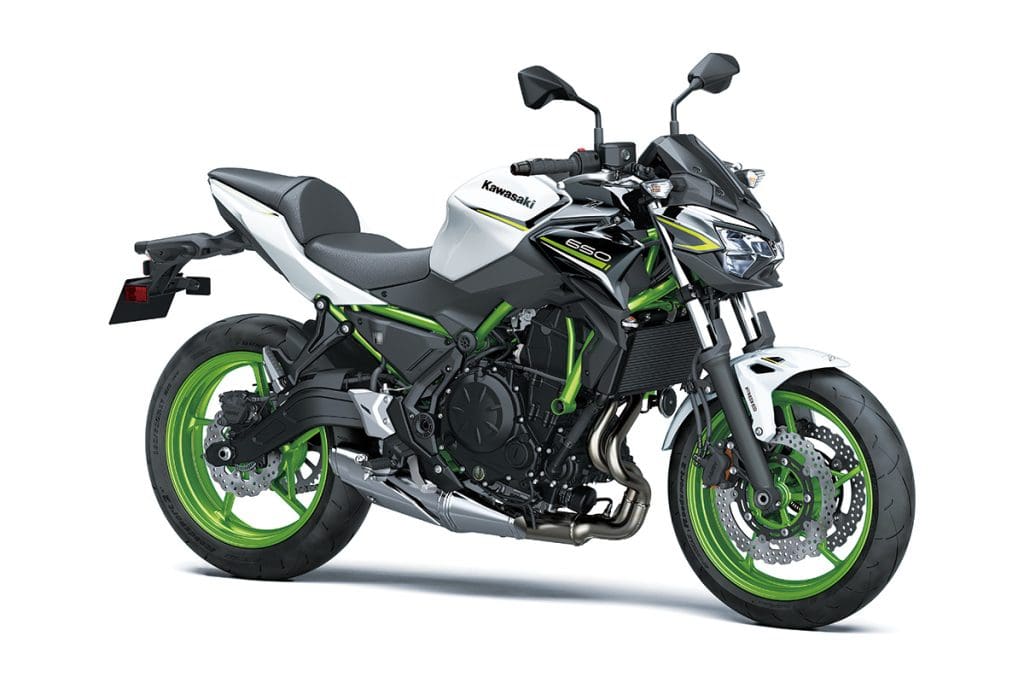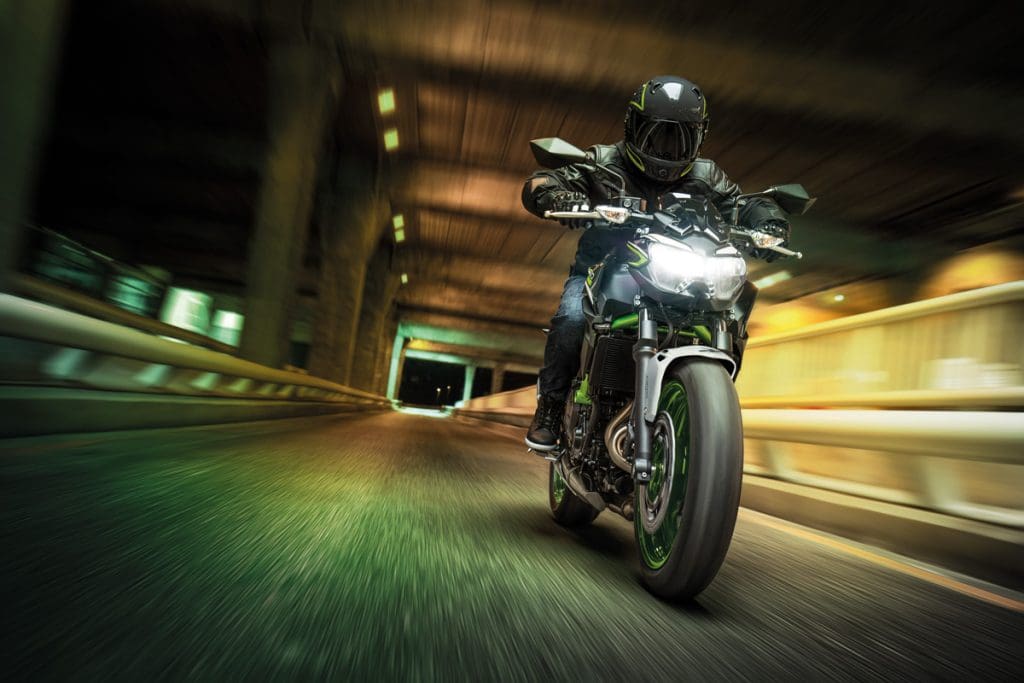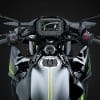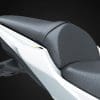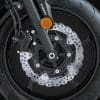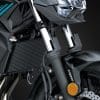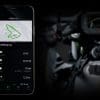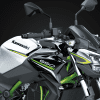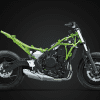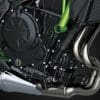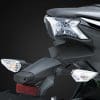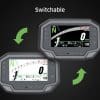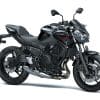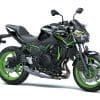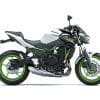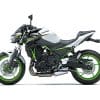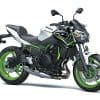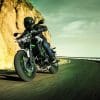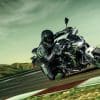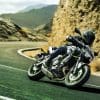The 2021 Kawasaki Z650: Riding Naked!
Contents
The 2021 Kawasaki Z650 fills the middleweight role in the naked bike battle for Team Green. The naked segment is rapidly growing, and this Japanese-made 649cc parallel-twin offers a well-sorted combination of styling, handling, and power.
The Z650 benefits from shared components used across the 2021 Kawasaki lineup. The 67 HP engine is perfectly suited to this Z format. The rider triangle places the rider “in” rather than “on top of” the bike for a feeling of confident connected handling. This Kawasaki bike includes ABS braking, Assist & Slipper clutch, and Bluetooth smartphone connectivity via the Rideology App.
Overall the design team delivers a sharp looking bike with a bold front face and minimalist bodywork. I find the look to be clean, with a good amount of streetfighter aggressive.
Colors for 2021 include — Pearl Blizzard White/Metallic Spark Black, Metallic Spark Black/Metallic Flat Spark Black, and Metallic Spark Black
The 2021 Kawasaki Z650 starts at $7,249 USD / $8,499 CAD.
On this page: we’ve curated specs, features, news, photos/videos, etc. so you can read up on the new 2021 Kawasaki Z650 in one place.
Model Overview
General Info
- Price: $7,249 USD / $8,499 CAD
- Key Features:
-
- ABS Brakes
- Smartphone Connectivity
- Assist And Slipper Clutch
- Twin LED headlights
Main Specs
- Engine: 649cc, liquid-cooled, 4-stroke, DOHC 8-valve parallel twin
- Power: 50 kW (67 hp) @ 8,000 RPM
- Torque: 47.0 lb-ft (63.7 NM) @ 6,700 RPM
- Wet Weight: 187 kg (412 lb)
- Seat Height: 790 mm (31.1 in)
Competitors
2021 Kawasaki Z650 Specifications
ENGINE |
||
| Engine | 649cc, liquid-cooled, 4-stroke, DOHC 8-valve parallel twin | |
| Power | 67 hp | |
| Bore x Stroke | 83.0 x 60.0mm | |
| Compression Ratio |
10.8:1
|
|
| Fuel System | DFI® with Keihin 36mm throttle bodies | |
| Starter | Electric | |
| Lubrication | ||
DRIVETRAIN |
||
| Clutch | ||
| Transmission | 6-speed, return shift | |
| Final Drive | Sealed chain | |
CHASSIS |
||
| Suspension Front | Telescopic fork/4.9 in | |
| Suspension Rear | Horizontal back-link with adjustable preload, swingarm/5.1 in | |
| Brakes Front | Dual 300mm petal-style discs with two-piston calipers, ABS | |
| Brakes Rear |
Single 220mm petal-style disc, ABS
|
|
| Tires Front | 110/70-17 | |
| Tires Rear | 150/70-17 | |
| Fuel Tank Capacity | 4.0 gal | |
| Color |
Pearl Blizzard White/Metallic Spark Black, Metallic Spark Black/Metallic Flat Spark Black
|
|
ELECTRICAL |
||
| Ignition | TCBI with electronic advance | |
| Spark Plugs | ||
| Headlight | LED | |
| Tail Light | LED | |
DIMENSIONS |
||
| Overall Length | 81.3 in | |
| Overall Width | 30.1 in. | |
| Overall Height | 41.9 in | |
| Wheelbase | 55.5 in | |
| Ground Clearance | 5.1 in | |
| Seat Height | 31.1 in | |
| Curb Weight | 412.3 lb | |
WARRANTY |
||
| Warranty | 12 Month Limited Warranty | |
| Kawasaki Protection Plus | 12 / 24 / 36 / 48 months | |
2021 Kawasaki Z650 Features
Assist & Slipper Clutch
Under normal operation, the assist cam functions as a self-servo mechanism, pulling the clutch hub and operating plate together to compress the clutch plates. This allows the total clutch spring load to be reduced, resulting in a lighter clutch lever feel when operating the clutch.
When excessive engine braking occurs – as a result of quick downshifts (or an accidental downshift) – the slipper cam comes into play, forcing the clutch hub and operating plate apart. This relieves pressure on the clutch plates to reduce back-torque and helps prevent the rear tire from hopping and skidding. This race-style function is particularly useful when sport or track riding.
Dual Throttle Valves
On models with dual throttle valves, there are two throttle valves per cylinder: in addition to the main valves, which are physically linked to the throttle grip and controlled by the rider, a second set of valves, opened and closed by the ECU, precisely regulates intake airflow to ensure a natural, linear response. With the air passing through the throttle bodies becoming smoother, combustion efficiency is improved and power is increased.
Economical Riding Indicator
While effective vehicle speed and engine speed may vary by model, paying attention to conditions that cause the “ECO” mark to appear can help riders improve their fuel efficiency – a handy way to increase cruising range. Further, keeping fuel consumption low also helps minimize negative impact on the environment.
Smartphone Connectivity
ABS (Anti-lock Brake System)
Horizontal Back-link Rear Suspension
A secondary benefit is that the shock unit is placed far away from exhaust heat. Because it is more difficult for heat from the exhaust system to adversely affect suspension oil and gas pressure, suspension performance is more consistent.
2021 Kawasaki Z650 Photos
2021 Kawasaki Z650 Videos
Links
Kawasaki Official Websites


